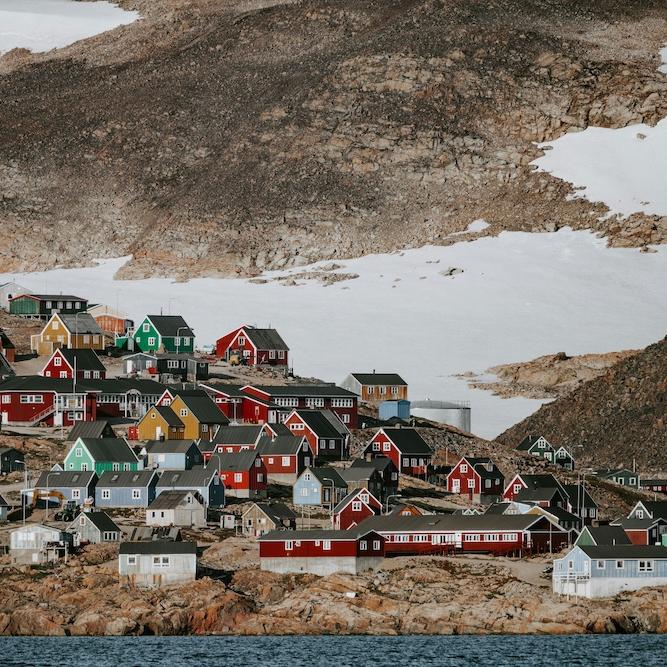While studying police reform in Providence, Rhode Island, in 2017, Joseph Margulies ’82 got to know the city’s Olneyville neighborhood, which had forged a new relationship with police and seen crime rates plummet.
But Margulies, a professor of practice in the College of Arts and Sciences and at Cornell Law School, discovered policing was only part of the neighborhood’s transformation. Once home to a thriving textile industry, Olneyville was one of the state’s most distressed places for much of the 20th century. But as local residents and their allies tackled one problem after another – from housing and green space to public schools and policing – the neighborhood became attractive to an entirely new demographic. In the last 15 years, Olneyville has become significantly more white, expensive and unequal.
Olneyville’s gentrification – how it became both more livable and more vulnerable for its lower-income residents – is the subject of Margulies’ third book, “Thanks for Everything (Now Get Out): Can We Restore Neighborhoods without Destroying Them?” Margulies discussed the issues and potential solutions with the Chronicle.
Question: What did the transformation of Olneyville look like?
Answer: Gentrification in Olneyville looks like it does almost everywhere: comparatively wealthy newcomers arrive to take advantage of cheaper rents, bringing with them new restaurants, shops and cultural expectations, and eventually raising costs. But what I found in Olneyville was something singularly painful to watch. For decades, most of Providence ignored Olneyville as it sank deeper and deeper into despair. It was only after low-income residents and their allies changed the place, transforming a toxic waste dump into an award-winning park, forging an entirely new relationship with the police, building hundreds of below market-rate housing units, and opening the local school to the entire community, that the rest of the city awoke to the neighborhood. So just when the place becomes livable, it becomes vulnerable, which became the moral dilemma at the core of the book: In the wealthiest country on earth, can it possibly be that low-income residents only get to live in wretched places? I refuse to accept that.
Q. What did you conclude was driving this process?
A. The people and organizations that serve Olneyville residents don’t want to be agents of destruction. But they are part of a system beset by two fundamental problems.
First, policymakers hew to the neoliberal notion that social problems are better solved by the private sector than by government. So the principal role of government in a distressed neighborhood like Olneyville is to create opportunities for private investors. But the funding available through these programs is not remotely enough to house all who need shelter, or to stabilize rents at levels that are affordable to the lowest-income residents.
The second fundamental problem is equally serious but more pernicious. The current approach to neighborhood well-being empowers a small army of nonprofits and community development corporations that tend to be managed, staffed and funded by well-intended and comparatively well-heeled whites who typically do not live in or come from the neighborhoods they serve. As a result, outsiders, rather than low-income residents, decide how to spend the money that flows into the neighborhood. Outsiders become leaders; residents become supplicants.
In short, the tools available to places like Olneyville will never prevent capital from overrunning the neighborhood and will never equip its victims to fight back.
Q. What do you propose should be done to better protect low-income residents in improving neighborhoods?
A. At the most fundamental level, the solution is to decommodify property and empower the poor. Give low-income residents ownership and control of neighborhood assets, including the money that flows in from outside. Place the assets in trust for the permanent benefit of low-income residents, and deploy them to make property sustainably affordable. Pair investment with state or federal tax credits to augment those assets, but only on the explicit condition that money that flows into the neighborhood be controlled entirely by low-income residents and their chosen allies.
Q. What tools could be utilized to achieve that end? Are there any success stories?
A. Community Land Trusts offer one tool to keep housing affordable. In the classic CLT, the purchaser owns the home, but the land is held in trust for the long-term benefit of local residents. Because the purchaser only owns the structure and not the land beneath it, she can buy it at an affordable price. In exchange, she gives up the right to sell the home for whatever price the market could demand. Instead, she agrees to sell to another low-income purchaser at a price which preserves neighborhood affordability while still providing her a modest profit on her investment. In this way, CLTs protect low-income neighborhoods by removing property from the speculative frenzy of a gentrifying area. That’s what I mean by decommodifying property.
But I think a CLT doesn’t go far enough. All of the programs that now lace through a distressed neighborhood should be controlled by the low-income people who live there, and all the assets should be held in trust – one that meets the overlapping needs of the whole neighborhood.
I call this solution a neighborhood trust. It pairs the sustainable affordability of a CLT with ownership and control of neighborhood assets, all of which are placed in trust. Several organizations have begun to implement and improve upon my idea, which is exciting and gratifying.
Q. Besides keeping neighborhoods affordable, do you see other benefits from curbing gentrification?
A. By itself, a neighborhood trust will not solve all the problems that confront a place like Olneyville. It will not stop climate change, revive the manufacturing sector or make people tolerant. It will not end racism, classism or xenophobia. But it will give low-income residents ownership and control of the wealth that flows into their neighborhoods. It will let them permanently capture increases in the value of land, invest and manage their capital, and deploy assets as they see fit. It will restore some of the wealth and social capital that have been drained away by decades of disinvestment and neglect. And that, in turn, will give the poor something they have never had in this country: power.





